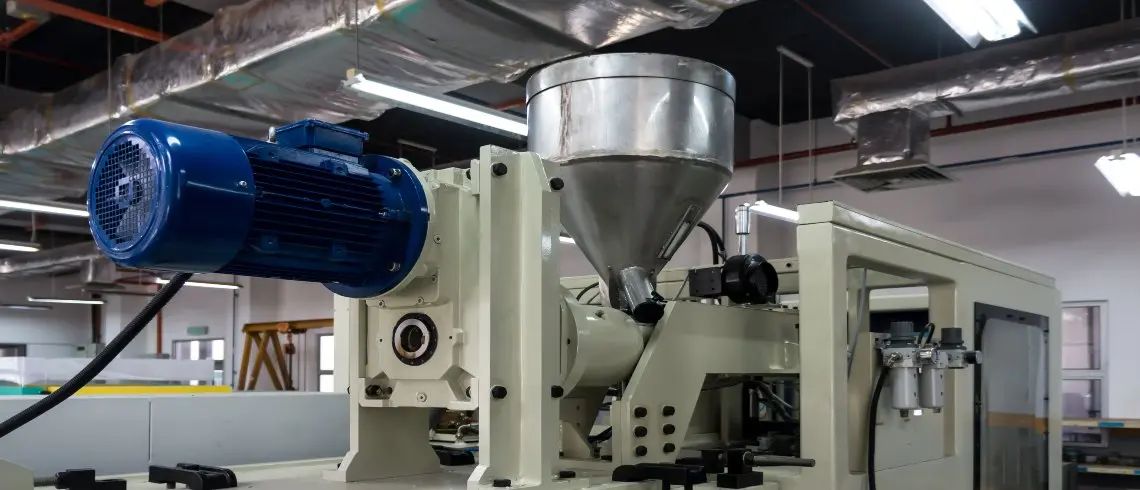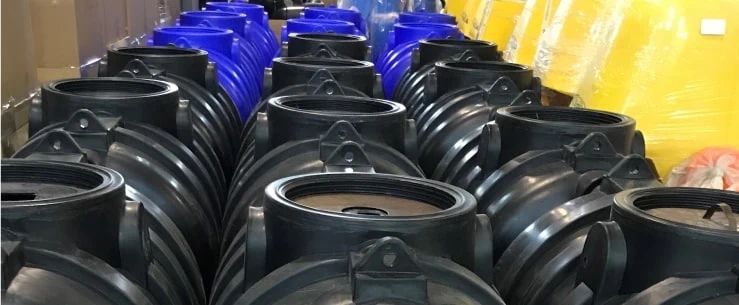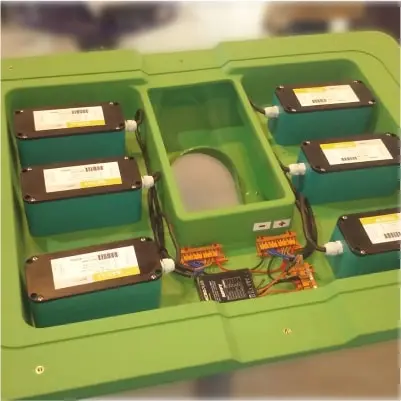In the world of plastic component manufacturing, the choice between rotational or injection molding can make all the difference in terms of efficiency, cost and adaptability.
Both methods offer versatile solutions, making them fundamental pillars in industries such as automotive, logistics, healthcare and street furniture, although they have important nuances that we will explain in this article.
Knowing how to compare these manufacturing techniques allows us to identify the most suitable one according to the specific characteristics of each project, so we will compare issues such as their design limitations, material strength or production volume.
What is injection molding?
Injection molding is one of the most common processes for the manufacture of plastic parts, especially when it comes to mass production. It consists of heating the plastic material until it melts and then injecting it into a closed mold under high pressure. Once the material cools and solidifies, a finished part with the exact specifications of the mold is obtained.

This method is characterized by its speed and precision, which makes it ideal for manufacturing large quantities of small and medium-sized parts with high quality and uniformity.
Despite its advantages, this process also has important limitations to consider:
- High initial costs: Mold making is expensive, making it less viable for small series.
- Difficulty with complex designs: Parts with intricate geometries, such as internal cavities, are difficult to produce.
- Long setup times: Although production time per unit is fast, initial equipment setup and mold design can be slow.
What is rotomolding?
Rotomolding -also known as rotational molding- is a process that uses hollow molds into which plastic material is introduced in powder form. This material is evenly distributed on the mold walls by continuous rotation on two axes while it is heated for melting. Once the heating phase is completed, the mold is cooled in a controlled manner to solidify the material. By varying the temperature and speed of rotation of each shaft, different thicknesses can be achieved without varying the mold.

This processing technique uses different materials or polymers depending on the desired specifications and offers a number of advantages that make it stand out in the industry:
- Low initial investment: molds are simpler and cheaper to produce compared to plastic injection molds.
- Versatility: It allows the production of parts with complex geometries and intricate details. In addition, it is ideal for producing large parts that would be unfeasible by other methods.
- Flexible production: It is possible to produce both short series and medium-sized productions.
- Quality of the resulting product: It allows the manufacture of watertight parts, in a single hollow piece and without welds, with high chemical resistance and long-lasting physical and mechanical properties, as no pressure is used during the process.
- Optimized production times: The possibility of integrating components such as inserts and embedded metal fittings adds additional value to the process, making it more versatile and efficient.
Key differences between rotomolding and plastic injection molding
The choice between injection and rotational molding will depend on the specific needs of the product and its technical requirements. The following table lists the main differences between the two:
| Injection molding | Rotomolding | |
| Initial investment | High (expensive molds and complex initial setup) | Low (inexpensive molds and simple initial setup) |
| Process scalability | Ideal for large volumes, not very efficient for small production runs | Optimal for both small and medium runs |
| Geometries | Difficulty with complex designs | All shapes and geometries, even with cavities and intricate detailing |
| Size | Small to medium parts | Any size, including large parts that would be unfeasible by other methods |
| Resulting parts |
|
|
| Waste | Generates leftovers | Production without waste, making it a more sustainable technique. |
Common applications of both methods
Injection molding
This method is widely used in sectors that require mass production of small to medium-sized parts, uniformity and high precision. Some outstanding examples:
- Automotive: Rear-view mirror housings, steering wheel covers, sensor brackets and lighting system components.
- Electronics: Electronic device housings, connectors, circuit holders and electrical insulation parts.
- Consumer goods: Kitchen utensils, small toys, plastic furniture, gardening tools and bathroom accessories.
- Medical: Syringes, medical equipment housings, drug storage containers and medical device parts.
- Containers and packaging: Plastic bottles, container lids, caps, food boxes, reusable packaging and airtight containers.
- Industrial sector: Gears, structural supports, flexible hinges, machinery components and specific parts for industrial processes.
Rotomolding
It is applied in a multitude of sectors for the manufacture of custom plastic parts, which require durability, high chemical and/or mechanical resistance or are too large or complex to be manufactured by other techniques. Some examples:
- Automotive: bumpers, fuel tanks, interior components, air ducts and battery housings.
- Agriculture: Seed tanks, fertilizer tanks, irrigation pipes and tractor components.

- Leisure and sports: large and complex shaped toys, sports and recreational equipment, such as kayaks, canoes or surfboards.
- Construction: Architectural elements, waste containers and infrastructure components such as water conveyance systems.
- Chemical industry: Chemical storage tanks and corrosion-resistant containers.
- Healthcare: Hospital furniture and housings for medical components.
- Energy sector: Supports for solar panels, rotating equipment housings, floats for floating photovoltaic installations or hydrogen containers.

- Food: Food contact utensils and containers, refrigerated cases and components for food processing machinery.
- Defense: Housings and containers for military equipment and lightweight, durable and camouflageable structural components for military vehicles.
- Logistics: Pallets, storage and shipping containers or cargo handling equipment.
How we work plastic rotomolding in ABC Rotomoldeo
With more than 17 years of experience, ABC Rotomoldeo is the rotomolding company of reference thanks to our strong commitment to quality, sustainability and innovation.
What makes us special?
- Total customization: We offer a comprehensive and personalized service for the manufacture of plastic parts that includes the study, design, manufacture and control of customized plastic parts.
- Comprehensive advice: We have a multidisciplinary team of designers, engineers and technicians specialized in rotomolding manufacturing who will guide you through the component manufacturing process, whether you already have a prototype of the product or you simply have an idea of what you need.
- Advanced technology: We work with state-of-the-art technology, for example, machinery capable of producing parts up to 4.5 meters in diameter.
- Flexibility in production: We are specialists in the production of short or medium series, which allows us to attend projects with smaller scale without sacrificing efficiency.
- Agility in design and production changes: Thanks to the ease of modifying molds and changing colors, we are able to optimize time and costs in customized projects.
- Sustainability: We implement circular economy practices ensuring that all our products are 100% recyclable at the end of their useful life.
If you are looking for a partner for your next project or have doubts about which process is the most optimal for your needs, at ABC Rotomoldeo we will be happy to advise and guide you to make the right decision.
